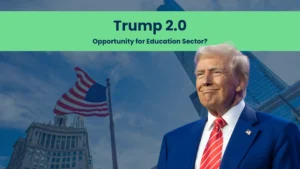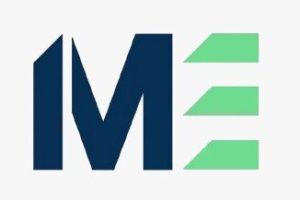In the high-stakes world of global EdTech, most players are looking west — targeting North America, Europe, and other “mature” markets. But a quieter, potentially far more seismic shift is happening in the East. India — a country with over 265 million school-going children and a rapidly expanding internet base — is becoming the center of gravity for the future of learning.
Yet here’s the warning: if global EdTech giants don’t act by 2026, the window may be shut for good.
The Opportunity: India’s Digital Learning Boom
According to a joint report by KPMG and NASSCOM, India is projected to have over 500 million digital learners by 2030 — spanning from early childhood to adult re-skilling segments. With its young population (median age ~28) and one of the largest K–12 ecosystems globally, the numbers are staggering:
- 1.5 million schools (of which ~400K+ are private and tech-enabled)
- 40,000+ higher education institutions
- 1.4 billion total population (of which 27% is under age 15)
- Over 850 million internet users by 2025
It’s a demographic and digital dividend like no other.
But it’s not just about numbers – it’s about readiness.
- The National Education Policy (NEP) 2020 mandates coding, digital literacy, and competency-based learning.
- CBSE and state boards are rapidly adopting hybrid and online models.
- India’s EdTech infrastructure, from broadband in schools to AI-powered platforms, is already accelerating.
The Warning: Why 2026 Is a Deadline, Not a Guideline
The Indian EdTech ecosystem has become increasingly competitive and inward-looking. Here’s what’s happening:
1. Rise of Local Giants
Homegrown players are now dominating K–12 and Test Prep markets. Despite recent funding slowdowns, their early entry, vernacular content, and pricing models have deeply embedded them in Tier 2 and 3 cities.
2. Regulatory Readiness
India is building a supportive EdTech regulatory environment. The National Digital Education Architecture (NDEAR) and initiatives like DIKSHA and PM e-Vidya show the government’s intent to build a centralised, scalable digital education framework.
This gives local players the edge to align faster than foreign platforms bogged down by bureaucracy and compliance uncertainty.
3. Consumer Loyalty Is Forming Now
As per the 2023 India EdTech Consumer Sentiment Survey, 74% of parents now prefer Indian platforms over international ones due to content localization, price, and teacher availability. If you’re not on their radar by 2026, you likely never will be.
Segments Where India Is Moving Faster Than the West
K–12 Learning
India’s NEP-led shift toward holistic, skill-based learning is driving mass adoption of STEAM platforms, coding, AI, and SEL programs in primary and secondary education. If you offer structured pedagogy, AI personalization, or formative assessment tools — the market is wide open. But not for long.
Test Prep
With 10M+ students preparing annually for competitive exams like JEE, NEET, UPSC, Test Prep remains India’s golden goose. Local platforms have mastered low-cost, high-volume models. Global players waiting for “premium” penetration may be too late.
SkillTech & Vocational
Platforms like upGrad, Coursera, and many more are already tapping into India’s 400 million working-age population, 80% of whom need upskilling in the next decade. India’s Skill India Mission has opened the doors, but there’s space for more.
Early Learning & Foundational Literacy
With 33 million pre-schoolers, and initiatives like NIPUN Bharat aiming for foundational literacy by 2026–27, India is investing heavily in ECCE (Early Childhood Care & Education). Platforms aligned with UNESCO’s SDGs and 21st-century learning frameworks are in high demand.
Why the Clock Is Ticking for Global EdTechs
Here’s the truth: Indian learners are already choosing their platforms.
The first movers (especially post-COVID) are securing contracts with schools, forming public-private partnerships, and entering homes via freemium apps. By 2026:
- Customer loyalty will harden
- Market saturation will spike
- Price elasticity will narrow (due to increased localization)
- Government support will favor “Made in India” platforms
You’ll need to compete not just on product, but on culture, pricing, language, and policy fit. That’s a tall order — unless you begin now.
What’s the Solution? Enter India with a Localized Edge
Global EdTechs don’t need to go it alone. They need hyperlocal partnerships, trusted networks, and agile GTM models tailored for India. From curriculum alignment to influencer-led outreach, the Indian market demands nuance.
This is where consultative market enablers like India Market Entry (IME) come in.
About IME — Your Fast-Track to India
India Market Entry (IME) is a boutique consulting firm that has helped EdTech leaders from the UK, Germany, the US, and Australia successfully navigate the Indian education market. With reach across:
- 83K+ educational institutions
- 100K+ Edu-preneurs
- 11K+ large corporates and learning partners
IME offers customized pathways — from curriculum alignment to school partnerships, from local hiring to regulatory navigation. No commission traps, no broken promises — just data-backed execution.
Your global solution may already be world-class. But without a local path, you won’t reach Indian learners.
Final Thought: The Indian Bus Is Leaving the Station
Global EdTech companies once led the conversation. Today, they risk becoming echoes in India’s education revolution.
The question isn’t “Is India the right market?”
It’s “Will you be too late to matter?”





